communications

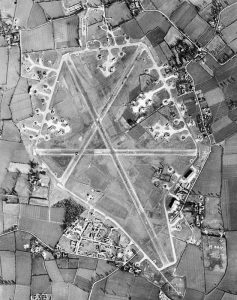 Most of the time, when we think of time and distance here on planet earth, we tend to feel like we are just a speck compared to the size of this planet, and I suppose that is true, but sometimes, our connection to one another is, in reality, much closer than we know. My dad, Allen L “Al” Spencer was a top turret gunner on a B-17G Bomber in World War II. He was stationed at Great Ashfield, Suffolk, England. I have always been very proud of my dad’s service, and because of his service, I have also always had an interest in other World War II bases in England.
Most of the time, when we think of time and distance here on planet earth, we tend to feel like we are just a speck compared to the size of this planet, and I suppose that is true, but sometimes, our connection to one another is, in reality, much closer than we know. My dad, Allen L “Al” Spencer was a top turret gunner on a B-17G Bomber in World War II. He was stationed at Great Ashfield, Suffolk, England. I have always been very proud of my dad’s service, and because of his service, I have also always had an interest in other World War II bases in England.
Yesterday, while researching my husband Bob’s great uncle, Richard F “Frank” Knox for his birthday today, I found myself reading his obituary again, looking for more information on a man I admired. I have always liked Frank very much, but because of the fact that we lived in Wyoming and they lived in Washington, I can’t say that I knew about his everyday life, and I certainly didn’t know about his military career. That said, while I had read the obituary right after his passing July 13, 2017, somehow it didn’t  hit me that he was stationed as a communications officer at RAF Horham, Suffolk, England. Of course, my curious mind had to go to Google Earth. I wanted to know if the Air Base was still visible, because most of them have been in one way or another returned to farm land. I did find the base, and while it’s outline isn’t as clearly marked as Great Ashfield is, I could pick out RAF Horham too. After finding the base, I was able to imagine a young Uncle Frank living and working there during the war. To me, that thought was very interesting, but another thing I noticed was the fact that Horham was not that far from Great Ashfield. In fact, my dad and Bob’s Uncle Frank were stationed a mere 22 miles away from each other. It is doubtful that they ever met, and if they did, they probably wouldn’t remember it, because it would be just in passing, but it occurs to me now, that the two men have probably met in Heaven, and they probably had some interesting stories to tell about their time in England.
hit me that he was stationed as a communications officer at RAF Horham, Suffolk, England. Of course, my curious mind had to go to Google Earth. I wanted to know if the Air Base was still visible, because most of them have been in one way or another returned to farm land. I did find the base, and while it’s outline isn’t as clearly marked as Great Ashfield is, I could pick out RAF Horham too. After finding the base, I was able to imagine a young Uncle Frank living and working there during the war. To me, that thought was very interesting, but another thing I noticed was the fact that Horham was not that far from Great Ashfield. In fact, my dad and Bob’s Uncle Frank were stationed a mere 22 miles away from each other. It is doubtful that they ever met, and if they did, they probably wouldn’t remember it, because it would be just in passing, but it occurs to me now, that the two men have probably met in Heaven, and they probably had some interesting stories to tell about their time in England.
As big as this old world is, and as unlikely as it seems that two families could have some close connections like this, I find that at least in my life, and my husband’s life, there are some connections, some very near misses, and some interesting encounters. Like my dad, Uncle Frank served out his time in the Army Air Forces right there 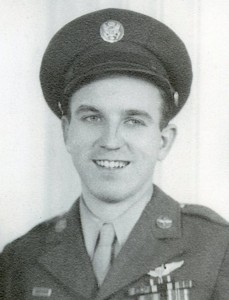
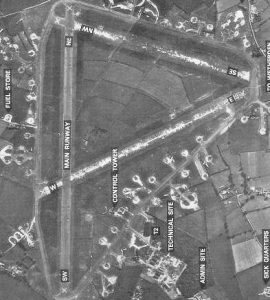 at RAF Horham, Suffolk, England. I imagine that like my dad, Frank took at least one leave to go and see London, because how could you go to England and not see London. Frank had a successful career in communications and then after his discharge from the service, four years, four months and four days of active duty, separating at war’s end with the rank of major. Frank served with distinction, earning a Bronze Star and the Air Medal, then he continued his military career in the Air Force Reserve. He retired in 1968 with the rank of Lieutenant Colonel. Today would have been Uncle Frank’s 98th birthday, and it is his first in Heaven. Happy birthday in Heaven, Uncle Frank. We love and miss you very much.
at RAF Horham, Suffolk, England. I imagine that like my dad, Frank took at least one leave to go and see London, because how could you go to England and not see London. Frank had a successful career in communications and then after his discharge from the service, four years, four months and four days of active duty, separating at war’s end with the rank of major. Frank served with distinction, earning a Bronze Star and the Air Medal, then he continued his military career in the Air Force Reserve. He retired in 1968 with the rank of Lieutenant Colonel. Today would have been Uncle Frank’s 98th birthday, and it is his first in Heaven. Happy birthday in Heaven, Uncle Frank. We love and miss you very much.
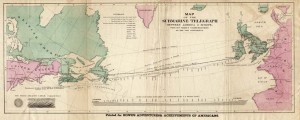 Communications have come a long way over the years. Still, most of us give little thought to how difficult it used to be in the not so distant past. Of course, letters were originally the only form of distant communications, and I suppose that some people, like my Uncle Bill, still think that is the best form of communication there ever was. These days, I would have to agree with them in many ways, but there are times when a letter is not quick enough. When the telegraph was invented in the 1830s and 1840s, it revolutionized communication. No longer did it take months to get an important message to family members. Prior to that time, a loved on might be dead for months before the family found out. I’m sure that in most cases, people still relied on letters for most things, so receiving an unexpected telegraph was probably a little scary.
Communications have come a long way over the years. Still, most of us give little thought to how difficult it used to be in the not so distant past. Of course, letters were originally the only form of distant communications, and I suppose that some people, like my Uncle Bill, still think that is the best form of communication there ever was. These days, I would have to agree with them in many ways, but there are times when a letter is not quick enough. When the telegraph was invented in the 1830s and 1840s, it revolutionized communication. No longer did it take months to get an important message to family members. Prior to that time, a loved on might be dead for months before the family found out. I’m sure that in most cases, people still relied on letters for most things, so receiving an unexpected telegraph was probably a little scary.
While telegraph made communications easier in our own country, trying to get an important message to someone from the homeland…not so much. Not until 1866, that is. Early attempts were made to lay  Transatlantic cable for the telegraph in the late 1850s, but those failed, and the confidence of the people was lost, taking with it investors willing to fork out the funds to undertake the next attempt. The first project began in 1854 and was completed in 1858. The cable functioned for only three weeks, but it was the first such project to yield practical results, so progress was being made. The first official telegram to pass between two continents was a letter of congratulation from Queen Victoria of the United Kingdom to the President of the United States James Buchanan on August 16, 1858. Signal quality quickly declined, slowing transmission to an almost unusable speed. The cable was destroyed the following month when Wildman Whitehouse applied excessive voltage to it while trying to achieve faster operation. The cable’s rapid failure undermined public and investor confidence and delayed efforts to restore a connection. A second attempt was undertaken in 1865 with much better materials, and following some setbacks, a connection was completed and put into service on July 28, 1866. This cable proved more durable.
Transatlantic cable for the telegraph in the late 1850s, but those failed, and the confidence of the people was lost, taking with it investors willing to fork out the funds to undertake the next attempt. The first project began in 1854 and was completed in 1858. The cable functioned for only three weeks, but it was the first such project to yield practical results, so progress was being made. The first official telegram to pass between two continents was a letter of congratulation from Queen Victoria of the United Kingdom to the President of the United States James Buchanan on August 16, 1858. Signal quality quickly declined, slowing transmission to an almost unusable speed. The cable was destroyed the following month when Wildman Whitehouse applied excessive voltage to it while trying to achieve faster operation. The cable’s rapid failure undermined public and investor confidence and delayed efforts to restore a connection. A second attempt was undertaken in 1865 with much better materials, and following some setbacks, a connection was completed and put into service on July 28, 1866. This cable proved more durable.
At that point, telegraph communications with the homeland of our nation’s immigrants became possible. While I’m sure it wasn’t inexpensive to send a telegraph…by the standards of the day, it did give the ability to keep in touch with family back home, and really, that was what it was all about. A letter from New York to England 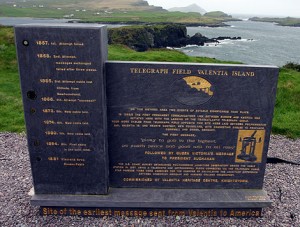 took ten days…provided nothing happened to the ship it set sail on. And it still had to get from out west, if that was where you lived to the east coast. I don’t think a month was far off on this. But then how good was the mail service in Europe? It could still easily take another several weeks for the letter to arrive. Primitive communications for sure. Of course, very few people use telegraph these days. I believe it can still be used to wire money, but electronic transfers are much faster, and often free, so why use it? That is the funny thing about inventions. They are only good until the next big thing that is invented makes the old ones obsolete. That is what things like the cell phone, the internet, and electronic transfers have done to things like letter writing and telegraph.
took ten days…provided nothing happened to the ship it set sail on. And it still had to get from out west, if that was where you lived to the east coast. I don’t think a month was far off on this. But then how good was the mail service in Europe? It could still easily take another several weeks for the letter to arrive. Primitive communications for sure. Of course, very few people use telegraph these days. I believe it can still be used to wire money, but electronic transfers are much faster, and often free, so why use it? That is the funny thing about inventions. They are only good until the next big thing that is invented makes the old ones obsolete. That is what things like the cell phone, the internet, and electronic transfers have done to things like letter writing and telegraph.

